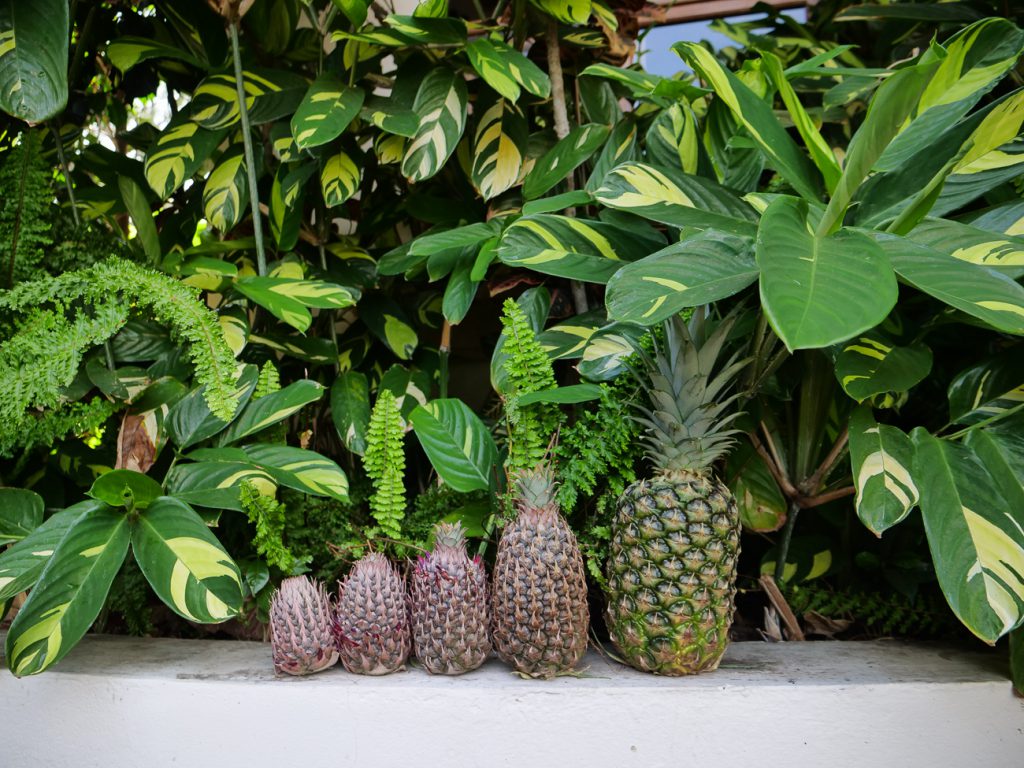
The sweet, tangy delight of a ripe pineapple is a tropical treat that is enjoyed worldwide. Behind this delicious fruit lies a well-orchestrated process of cultivation and care that transforms a mere seedling into a juicy, golden fruit ready for consumption.
Pineapple production is an intricate journey that involves several crucial steps, each contributing to the fruit’s growth and flavor development.
In this article, we delve into the five essential stages of pineapple production, shedding light on the meticulous efforts that bring this tropical delight to our tables.
1. Propagation
The journey of pineapple production begins with the selection of a suitable planting material. Pineapples are propagated using the crown, the leafy top portion of a mature fruit.
Farmers carefully cut off the crown, ensuring a clean cut without damaging the plant tissues. These crowns are left to dry for a brief period, allowing the cut end to callous.
Once ready, they are planted in well-prepared soil or specialized planting bags. The crown takes root and begins to grow, eventually forming the base for a new pineapple plant.
2. Nurturing Young Plants
In the nursery phase, the young pineapple plants are given optimal conditions to establish strong root systems and healthy foliage.
They require consistent watering, controlled sunlight, and protection from extreme weather conditions. After a few months, when the plants have gained sufficient size and vigor, they are transplanted into the main field.
This delicate process involves carefully removing the plants from the nursery and re-planting them at precise intervals within the designated plantation area.
3. Field Cultivation
Once transplanted, the pineapple plants require meticulous care to thrive. This stage involves practices like regular weeding to reduce competition for nutrients, proper irrigation to ensure adequate moisture levels, and the application of fertilizers to encourage healthy growth.
Farmers must also monitor for pests and diseases, promptly addressing any issues to prevent infestations that could harm the crop. The field cultivation phase plays a pivotal role in determining the quality and quantity of the eventual pineapple harvest.
4. Fruit Development
As the pineapple plants mature, they shift their energy towards the development of fruit. A remarkable transformation takes place within the plant, with the formation of the familiar spiky fruit structure at its center.
The flowering process is critical, as each flower corresponds to an individual pineapple fruit. Pollination, often aided by insects or even human intervention, sets the stage for fruit development. Over several months, the fruit grows larger, accumulating sugars, acids, and flavors that define its taste profile.
5. Harvesting
The pinnacle of pineapple production is the harvesting stage. Determining the right time to harvest is an art in itself, as it significantly impacts the fruit’s taste and quality.
Pineapples are typically harvested when they are fully mature but not overripe. The color of the outer shell, aroma, and ease of detachment from the plant are key indicators of readiness.
A swift, careful hand is required to cut the fruit from the plant without causing damage. Once harvested, pineapples do not continue to ripen significantly, so getting the timing right is essential for delivering a flavorful product to consumers.
In conclusion, pineapple production is an intricate process that demands a harmonious interplay of knowledge, care, and patience.
From the initial selection of planting material to the careful nurturing of young plants, from the vigilant cultivation phase to the rewarding moment of harvest, each step contributes to the final product we enjoy.
This tropical treasure serves as a testament to the dedication of farmers and the wonders of agricultural science. So, the next time you savor a juicy, golden slice of pineapple, remember the journey it undertook, transforming from a crown into a delectable delight on your plate.





